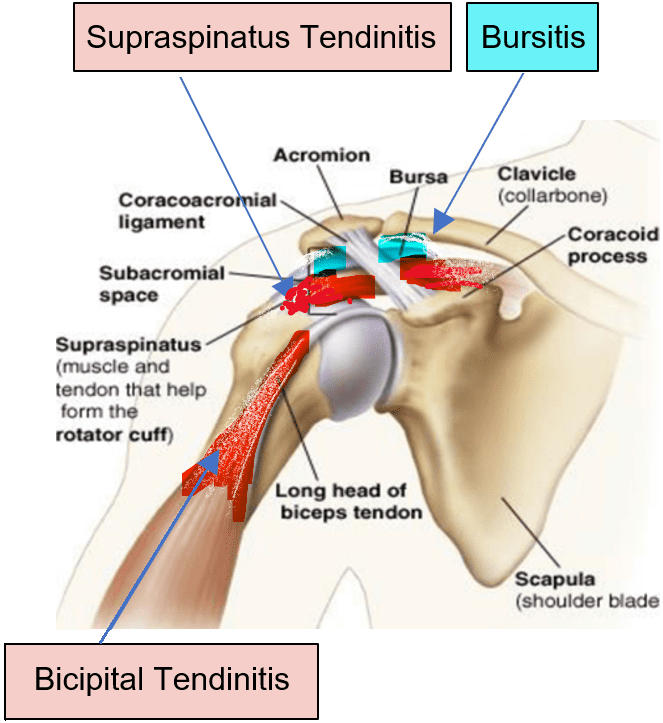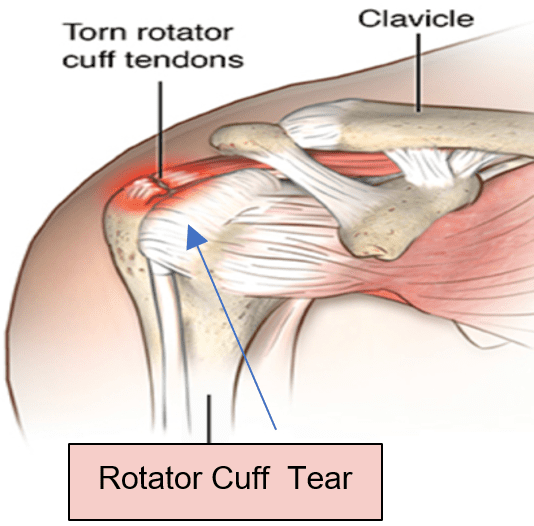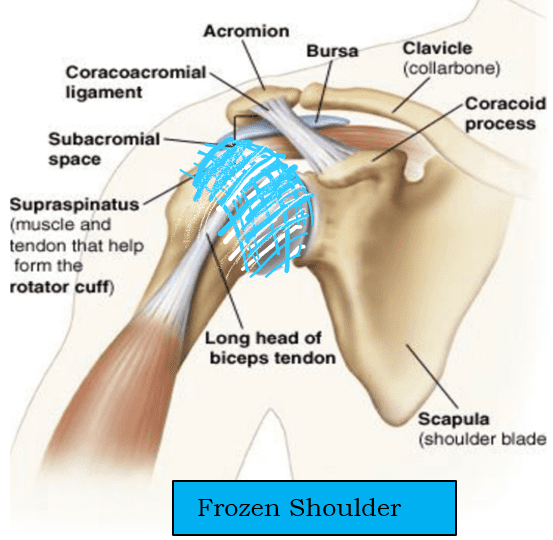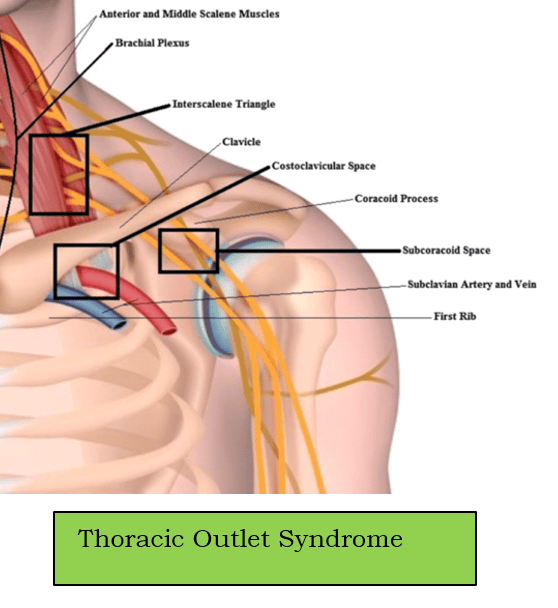Shoulder Pain
Shoulder pain can be caused by :
- Shoulder structure disease (Joint, Tendons, Muscles and Bursa)
- Cervical Spine disease (Disks, Muscles, Tendons & Bursa)
- Visceral disease (Heart, Lungs & Gall bladder)
- Nerve and Vessels (Thoracic Outlet Syndrome)
Initial evaluation is aimed at ruling out visceral or neck cause and then identifying the shoulder structure component responsible for pain. The following symptoms indicate pain not caused by shoulder structure:
- Pain is not affected by shoulder movement.
- Pain extends beyond elbow.
- Pain with neck movement.
We will address here the shoulder structure diseases and thoracic outlet only.
Shoulder Arthritis
- Shoulder joint is a non bearing joint —> wear and tear osteoarthritis does not occur unless there is previous trauma
- The most common cause of shoulder arthritis is Rheumatoid Arthritis
- Pain is at rest and worse with movement
- Exam shows swelling, redness and warmth with limited range of motion
- The joint is tender
- Treatment is similar to Rheumatoid treatment, short course of Steroids may help calming down the inflammation.

Rotator Cuff Disease
The most common cause of shoulder pain It refers to:
a-Rotator Cuff Tendinitis or b-Rotator Cuff Tear or C-Subacromial Bursitis
- Rotator Cuff is made of 4 muscles that anchor the shoulder blade muscles (Scapula) and attaches to the Humerus to control and allow the lateral arm movement
- The muscle usually affected in the majority of cases is the Supraspinatus
- Supraspinatus Tendinitis is suggested if there is pain in upper arm and is worsened with overhead activities, it is often worse at night especially when lying on the affected shoulder, risk factors include older age and repetitive overhead activity.
- Bicipital Long Head Tendinitis is usually diagnosed if pain is in anterior shoulder and illicited by palpating the tendon.
- Subacromial Bursitis bursa is Akad that separate bone from adjacent structures like tendons to prevent friction and tendon damage,when irritated it becomes inflamed and causes similar tendinitis pain with focal tenderness just under the Acromion
- Treatment is avoidance of aggravating overhead activities and physical therapy, patient should avoid using a sling (may cause stiffness and “frozen shoulder”)
- Tylenol can tried 1st, if ineffective NSAIDs(Ibuporofen) can be tried
- Steroid injections may provide short term relief.
- Partial Rotator Cuff tear can mimic tendinitis in its symptoms
- Total Tear of the Rotator Cuff usually happens in an elderly after falling on the shoulder and is manifested by inability to raise the arm more than 20-30 degree along with severe pain.this is usually confirmed by MRI or Ultrasound. Surgical repair is required


Adhesive Capsulitis (Frozen Shoulder)
- Usually happens in patient aged 40 to 70 years
- The main problem is excessive scarring, fibrosis and stiffness of shoulder joint
- It can follow any shoulder trauma
- Risk factors are: Immobilization, Diabetes, Hypothyroidism and Autoimmune disease
- Causes constant shoulder pain, it is worse art night and in cold weather, joint stiffness is prominent
- Treatment is: 1-Steroid injection, 2-Physical Therapy 3-Surgery is reserved for those who fail 3 months of conservative treatment

Thoracic Outlet Syndrome (TOS)
It is caused by compression of either nerves, arteries or veins exiting the chest between the clavicle (collar bone) and 1st rib.
- Neurogenic TOS is responsible for 90% of cases (Brachial Plexus is compressed), It causes arm weakness, numbness and pain with repetitive movement especially those involving overhead activity.
- Venous TOS causes arm weakness, pain, swelling and bluish discoloration
- Arterial TOS is usually caused by subclavian artery compression with or without thrombosis, usually there is anomalous cervical rib, symptoms include pain, weakness, numbness, coolness and pallor
Treatment:
- Neurogenic OTS: Physical Therapy —>no improvement or progressive symptoms —>Surgery
- Venous and Arterial OTS: Catheter directed thrombosis followed by surgical correction of the tight thoracic outlet
